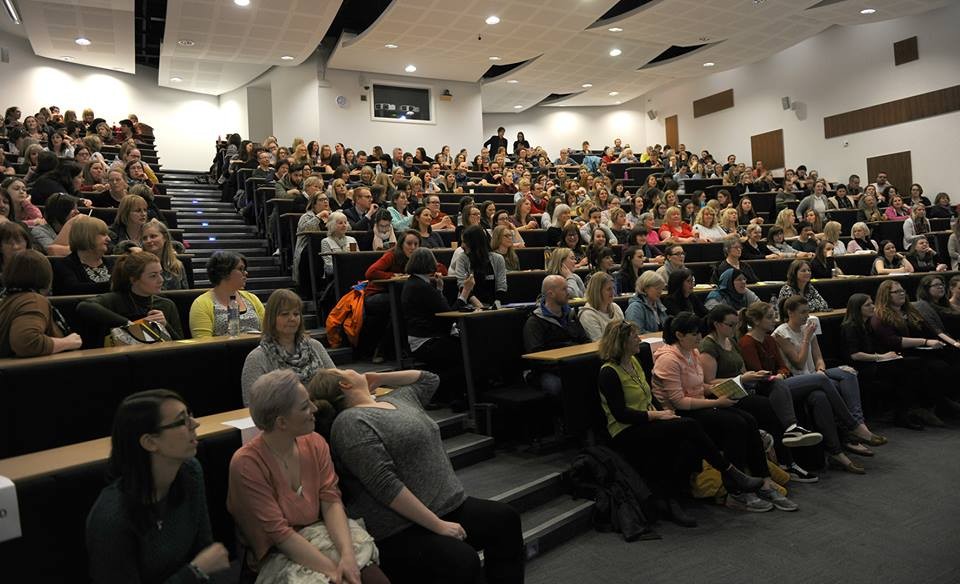I put ‘Outstanding’ in quote marks as Harrop Fold, from the Povey’s book, has yet to be given Ofsted’s outstanding seal of approval. Nevertheless, I believe Povey to be an outstanding head teacher from what I have watched and read. He is committed to making ‘the’ difference to his school and it seems through this book and the Educating Greater Manchester series to be working.
I had fallen in love with the team and the teaching styles of Harrop Fold School in Little Hutton from the Educating Greater Manchester series and when I found out head teacher Drew Povey had written a book, it was the first thing on my Christmas list (alongside a guillotine paper cutter and a laminator – nothing screams soon to be Newly Qualified Teacher and broke student more). Fast forward to the day before my placement and I have finally finished reading the book. Personal commitments and university assignments overtook the importance of the book but nevertheless it was fantastic and I could not recommend it enough to anyone and when I got the chance, I simply could not put it down.
Drew Povey had inspired me from the minute I set eyes on Harrop Fold in Educating Greater Manchester but what was clear from the book is the are many of others who inspire him from his brothers and his teachers to people he quotes in his books such as Obama, Churchill, EM Kelly or Spiderman. There were many messages in the book anyone could relate to; business leaders, head teachers or school teachers. However, in this short post I wanted to pick out a few parts of the book I related to most and the messages that were prominent to me.
Anyone who knows me will know me as quite a sporty person growing up (ok that hasn’t stuck too much throughout university but I am known as the sporty one in my friend group) and the links Povey makes between education and school including a chapter on having a playbook as probably the message that rings through the whole book to me. Povey’s leadership style often comes back to what he had learnt from rugby training and coaching. He uses tactics from rugby to get the ‘difficult children’ on side, he set up a rugby team at Harrop Fold to give these something to commit to at school; having the ‘hard lads’ onside rippled through the school and there was a murmur that Mr Povey was a ’sound guy’. Povey noted the importance of keeping these students onside and committed to creating a no exclusion policy, he wanted to ensure no child was written off which was an incredibly warming feeling. The importance of understanding the student’s behaviour, the root problem and not just looking at the bad behaviour was something perhaps I overlooked the significance of before and I was quick when faced with challenging behaviour to look at this as a personal attack and deal with the behaviour and not seek out the issue behind it all. In all honestly, the last time I remember dealing with significantly challenging behaviour, which did not stem from an additional support need, was in first year of university and thus reflecting back I did not really know much at all at the time of the placement although it was a great learning curve.
Throughout university, any assignment has told me to reflect more which I have tried so hard over the last two years particularly to work on. I probably took it too far when I had five page weekly reflections on my third year placement and it is still a goal going into my final placement to work on. Throughout the last chapter of the book it was evident how reflective the whole book had been. The process Povey suggests at Harrop Fold is that the teachers take on a new challenge for a certain period of time, reflect and review. If the challenge is making a difference they continue to monitor but Povey makes clear not all of the challenges were worth the time and energy put that the school team put into them. The open and honest dialogue between the different teams in Povey’s four types of meetings are what I aspire to achieve to make sure I am not wasting time and energy on strategies that are not working but continuing to reflect and notice the positives in my practice as well.
Although this post only picked out two things, I wouldn’t want to give too much away about the book. However, this book made me think deeper about my practice; about different techniques and pedagogical strategies I perhaps never have come across otherwise. I am very intrigued for the second series of Educating Greater Manchester. I am ready to see if there is any more inspiration Povey and his team at Harrop Fold can continue to develop in me as a teacher and I am excited to see how the school is getting on. Mostly, I am excited to see how these inspirations can play out in my practice as an NQT. If you haven’t already, I would recommend any teacher to read Povey’s story.
Povey also talks about Harrop Fold’s no exclusion policy to the Education Select Committee in this short video; https://twitter.com/HarropFold/status/965159166997422080.
Reference:
Povey, D. (2017) Educating Drew: The Real Story of Harrop Fold School Woodbridge: John Catt Educational Limited.

















 builds good health in children. Whilst at St Ninians this has proved that even getting outdoor for a small part of the day has improved the health of children by reducing the amount of children with childhood obesity to zero. St Ninians have spent the last three years having a daily mile – this is where they get their children outside to walk or run a mile every day. The teachers choose when in the day they do it, whenever fits best with their timetable for the day. The only thing that stops the classes doing their daily mile is heavy rain or ice.
builds good health in children. Whilst at St Ninians this has proved that even getting outdoor for a small part of the day has improved the health of children by reducing the amount of children with childhood obesity to zero. St Ninians have spent the last three years having a daily mile – this is where they get their children outside to walk or run a mile every day. The teachers choose when in the day they do it, whenever fits best with their timetable for the day. The only thing that stops the classes doing their daily mile is heavy rain or ice.